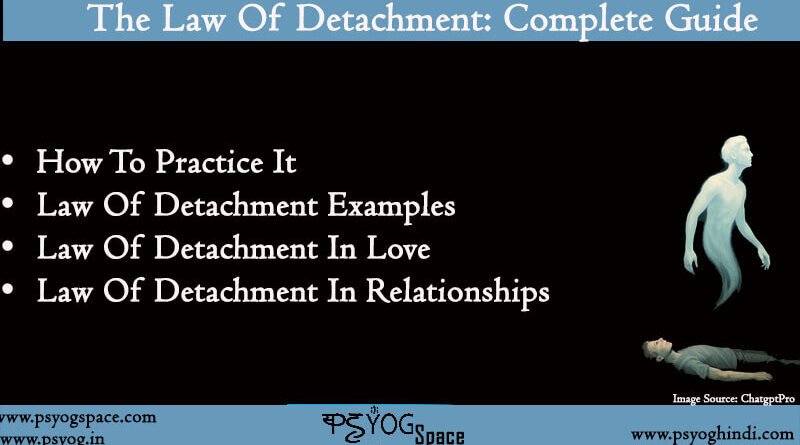The Law Of Detachment: Examples, Detachment In Love And Relationships
Most of us have been told to “let go” at some point — whether it’s letting go of control, expectations, or even people. But no one tells us how to do it, or what it really means. That’s where the law of detachment comes in. It’s not about cutting yourself off from life — in fact, it’s about showing up fully. Oddly enough, detachment isn’t cold or distant. It’s warm, open, and deeply involved.
The idea sounds strange because we’re taught that being attached is how we show we care. But attachment often creates fear, tension, and the need to hold on tightly. The law of detachment flips that idea. It says: trust life, let go of the outcome, and be here, now. And it works — in love, in relationships, and in countless everyday examples where surrender opens the door to peace.
The Law Of Detachment
Let’s get one thing straight: the law of detachment doesn’t mean you stop caring. It means you stop trying to force things. You still have goals, desires, and dreams — but you’re not desperate for them to happen in one specific way. You allow life to unfold naturally. (Read: The mystery of divine consciousness)
A big part of our struggle comes from being too stuck to the physical world — to forms, roles, expectations. Everything in the physical has boundaries. And boundaries need protection, which leads to fear. We build walls to protect our “self,” but what are we really defending? An identity built on fear and separation. That’s not love.
Love isn’t something that rises and falls based on what someone says or does. It’s not an emotion in the usual sense. Love is a space — a boundless dimension where your inner walls start to dissolve. The more you practice the law of detachment, the more you live in that open space where you’re not just reacting — you’re really alive.
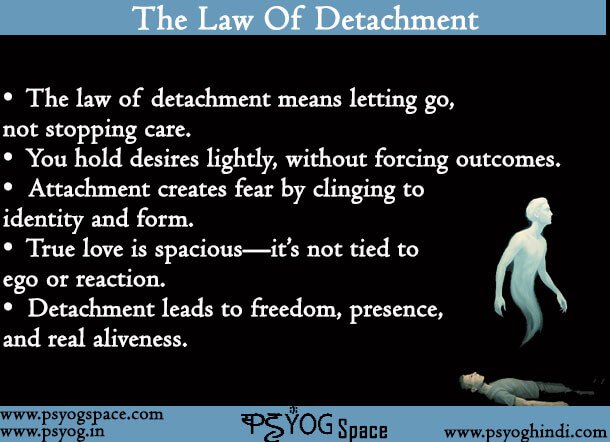
Law Of Detachment Examples
This all might sound philosophical, but it’s surprisingly practical too. Let’s look at some everyday law of detachment examples.
Say you’re applying for a new job. You put together a great application, prepare well for the interview, and give it your best shot. But instead of obsessing over the result, you let it go. You know your worth doesn’t depend on whether you get the job or not. That’s detachment.
Another one of the more relatable law of detachment examples happens in social situations. Maybe you reach out to someone you like. You’re open, honest, and vulnerable. But you’re not attached to whether they say yes or no. You care, sure — but you don’t cling. That kind of letting go feels strong, not weak.
What makes detachment beautiful is that it keeps you present. You’re not trapped in “what ifs.” You’re not constantly reacting. You’re involved in life — not because you’re trying to win, but because you’re here to experience it.
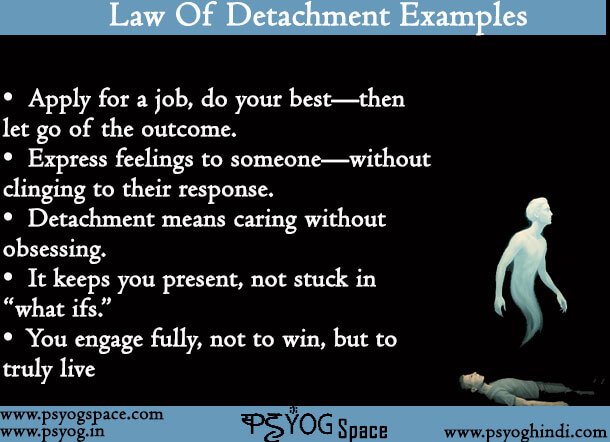
Law Of Detachment In Love
Let’s talk about love for a minute. Most of us are never taught how to love without fear. We grow up thinking love means holding on, being possessive, or constantly needing reassurance. But the truth is, none of that is real love — it’s attachment.
Practicing the law of detachment in love means loving without fear. You stop needing to control the other person. You let them be who they are, even when it’s hard. You understand that love is bigger than rules, roles, or outcomes. (Read: Low investment business ideas)
Here’s the deep part: love isn’t something you fall into. It’s something you fall into alignment with. When you’re detached, you don’t stop loving. You love more purely — without need, without fear. You don’t shrink your love to fit inside boundaries. You let it flow.
The law of detachment in love invites us to show up fully without gripping tightly. It reminds us that love is not a possession; it’s an offering.
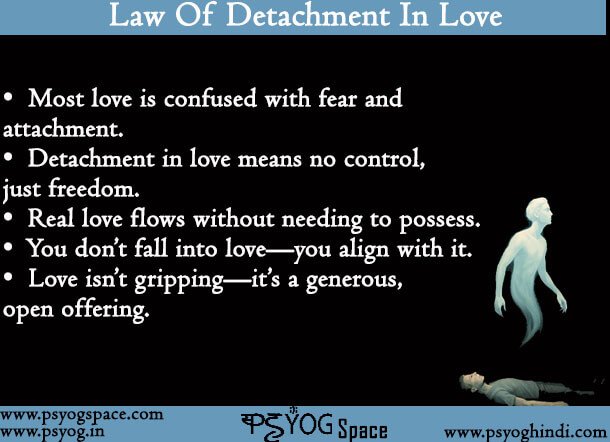
Law Of Detachment In Relationships
Now let’s widen the lens. The law of detachment in relationships goes beyond romance. It applies to parents, children, friends, coworkers — everyone. When we expect others to behave a certain way to make us feel secure, we put invisible chains on them. And on ourselves.
Detachment in relationships is about allowing people to be as they are — not as we want them to be. It’s about respecting someone’s path, even when it doesn’t match ours. You stop reacting. You stop taking everything personally. That’s when you actually start connecting for real.
One beautiful thing about this approach is that it makes us more involved — not less. When you’re not so busy protecting your emotions, you become available. You listen more. You show up better. As you said: detachment doesn’t mean being cut off. It means being all in — without fear.
People can feel when they’re being loved freely. That’s where relationships grow — in freedom, not control.
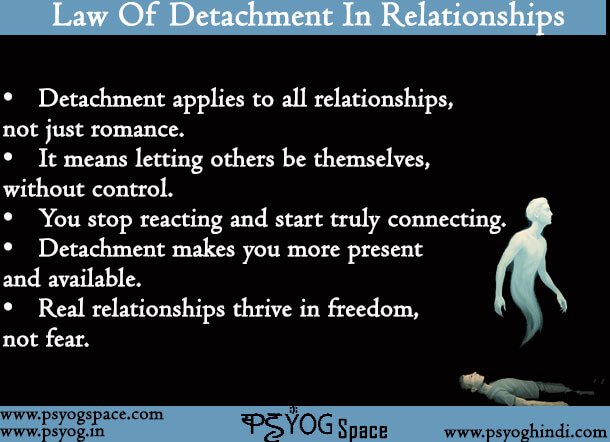
Conclusion
The law of detachment isn’t just a concept — it’s a shift in how you live. It teaches you that peace doesn’t come from controlling everything. It comes from being fully present without trying to force life to match your plan. Whether it’s in your career, your goals, or your relationships, it’s okay to care — deeply — without clinging.
As we’ve seen in these examples, the more you let go, the more aligned things become. Practicing the law of detachment doesn’t mean you stop loving — it means you love without fear. You trust that life, in all its wisdom, will unfold just as it should. (Read: What is an individuality complex?)
The law of detachment in love frees you from emotional chaos. The law of detachment in relationships creates space for real, deep connection. And in all of it, you discover something powerful: the more you release, the more life opens up.
FAQs
Detachment in relationships means not treating others as a commodity that we own. It is about respecting the space of others, and allowing them to be whatever they want. It is true that we try to mold people, this means that we only accept people when they meet our expectations.
However, true detachment in relationships means accepting people for what they are, and not robbing their right to be.
In manifestation, law of detachment means keeping our persona out of the process. For example, when we want something, we chart out our expectations based on our past experience which keeps us stuck in the known.
However, true manifestation lies in letting go and let things happen in an unpredictable way. When we stay in that unpredictable space, our limited mindset does not spoil the process.
Love is not an emotion but a dimension of existence that is hidden beyond our fear driven “I.” Our physical self is fear driven which is a must for preservation. However, when we detach from our physical self, we reach an infinite dimension of love wherein our ego ceases to exist.

